Antique Russian Imperial Samovar Brass by IG Batashev Tula Russia mid 1800s
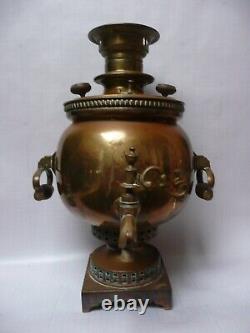
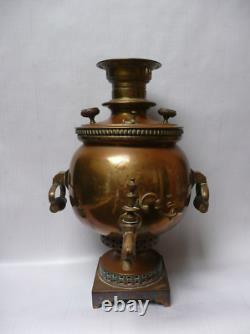
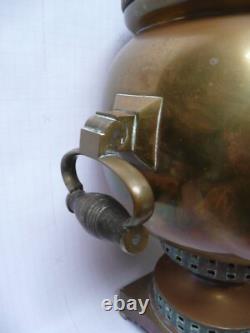
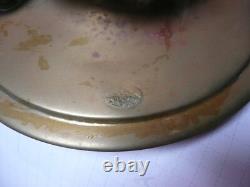

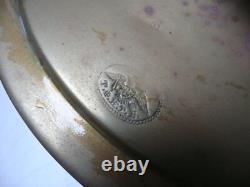
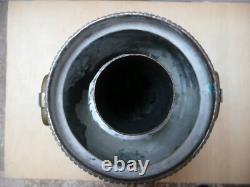

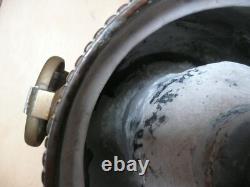
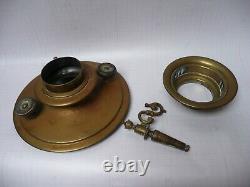
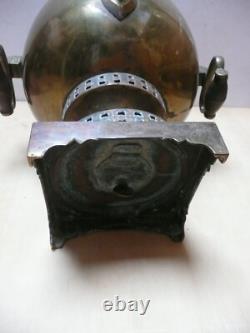
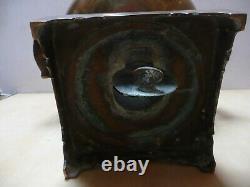
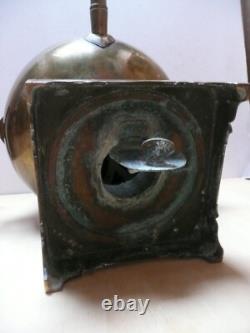
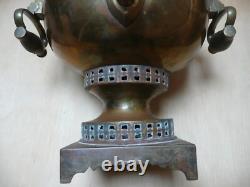
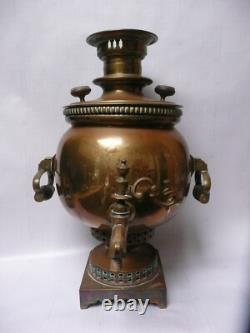
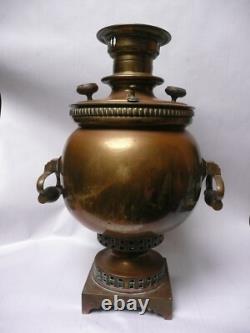
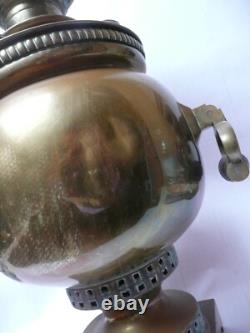
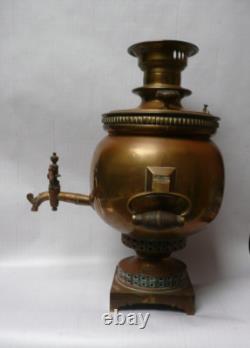
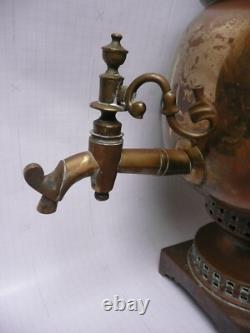
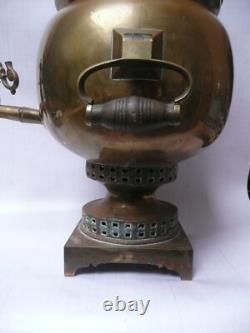

Antique Russian Imperial wood burning Brass Samovar Brass by I. Batashev Tula Russia mid 1800s - Ivan Grigorievich Batashev, drop handles, wooden spigot and pierced decoration.
Weighs just under 7 kg heavy! , stands 48 cm tall and cylinder is about 28 cm in diameter. Uneven shine is due to my incompetent polishing. Build up of limescale inside, it was actually used although very very long time ago.
Slight dent at the back, I tried to take a photo not sure how much can be seen due to the reflection. I have provided an archive photo of Mr Batashev in the listing. Maker's mark - "TFIGB" in Cyrillic which stands for "Tula Factory, Ivan Grigorievich Batashev".
There is an Russian idiom "To Tula with own Samovar" which is in British equivalent would be "To carry coals to Newcastle", this is because Russian town of Tula was a center of the samovar manufacturing. When we talk about the history of the origin of Batashev samovars, it is generally accepted, and many sources claim, that the factory appeared in 1840 thanks to Vasily Stepanovich Batashev, who later passed on his business to his sons. However, historical documents have survived to this day, which indicate that the first samovars with the Batashev stamp were produced since 1825 by Ivan Grigorievich Batashev (this samovar is an example of it), who is the namesake of the well-known Stepan Fedotovich Batashev. The relationship between the families of Ivan Grigorievich and Stepan Fedotovich has not been established. The output of the factory did not exceed 6 thousand samovars per year.Perhaps this is why samovars of these years are especially valued today. In 1882, Batashev samovars received a gold medal at the Moscow exhibition. The most popular shape of a wood-burning samovar is in the form of a cylinder. Samovars were produced in the shape of a ball/bubble, Greek vases, and shot glasses. There were 54 main models in total, which were preferred by customers in the 19th century, although the enterprise mastered about 165 styles during its entire existence.
The heirs of Nicholas II had Batashev samovars in their possession. What is special about Batashev samovars? Samovars from the Batashev factory have always been a source of pride for the nobility, decorated imperial palaces, and today are coveted exhibits in Russian culture museums and private collections. The company never used repeatedly remelted metal: those samovars that are often found in antique shops are rarely restored due to the use of copper waste. The Batashevs ordered only first-class sheet metal of a certain thickness. The most important advantage of Batashev products has always been and is considered to be the quality of assembly: they were not manufactured on a conveyor belt - this was only done by hand.
